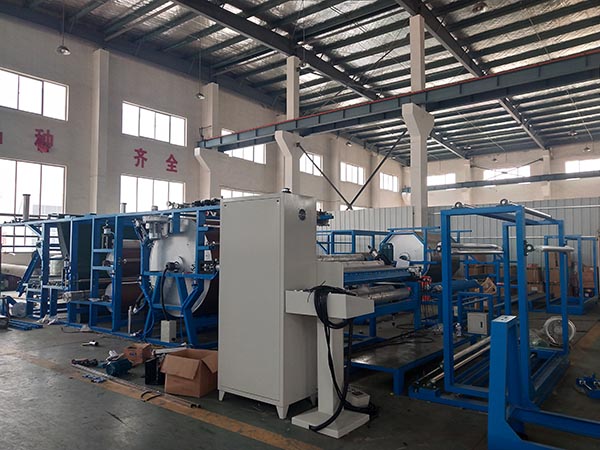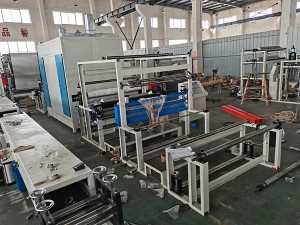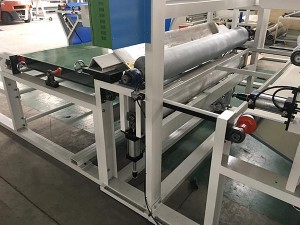The Flooring Expert
High-efficiency Glue Dot Transfer Laminating Machine
Usage
Mainly used in apparel fabrics, non-falling, fleece, plush, woolen cloth, lace, pongee, milk silk, TC cloth, non-woven fabric, denim, non-woven fabric, garment leather, wool cloth, sponge , TPU, PU,PE, EVA, PVC and other materials between the composite. Widely used in clothing, automotive interiors, shoes and hats, luggage, decoration, home textiles, toys and other industries, especially for the processing and processing of high-grade garment leather materials.
Features
1. The whole machine is equipped with active unwinding, multiple sets of automatic rectification, multiple sets of active open flattening, composite drying, water cooling, automatic slitting, surface friction winding and other units. The composite material has the advantages of uniform coating, compound flatness, no tensile deformation, no foaming, no wrinkle, good hand feeling, softness, good gas permeability and neat winding.
2. There are many varieties of composite materials, especially suitable for coating and compounding of cloth, non-woven cloth, cloth leather, sponge and flannel, sponge and leather;
3. Receiving and unwinding can choose the appropriate configuration according to different materials;
4. According to the characteristics of different materials, some devices can be added or removed;
5, suitable for solvent-based glue coating compound, to achieve a multi-purpose function.
6. The amount of glue applied and the type of glue applied can be adjusted according to the material and actual needs.
7. The drum heating can be performed by means of electricity, steam or heat transfer oil.
8. The width of the machine roll surface can be specified according to the width of the actual material.
9. The whole machine system can be operated and controlled by intelligent PLC program touch screen or mechanical type.
Dear customers, please read the following carefully before you choose the Laminating machine, thank you!
1.What’s our Laminating Machine?
Generally speaking, the laminating machine refers to a lamination equipment which is widely used in home textiles, garments, furniture, automotive interiors and other related industries. It is mainly used for two-layer or multi-layer bonding production process of various fabrics, natural leather, artifical leather, film, paper, sponge, foam, PVC, EVA, thin film,etc. Specifically, it is divided into adhesive laminating and non-adhesive laminating, and adhesive laminating is divided into water based glue, PU oil adhesive, solvent-based glue, pressure sensitive glue, super glue, hot melt glue, etc. The non-adhesive laminating process is mostly direct thermocompression bonding between materials or flame combustion lamination.
2.Which materials are suitable for laminating?
(1) Fabric with fabric: knitted fabrics and woven, non-woven, jersey, fleece, Nylon, Oxford, Denim, Velvet, plush,suede fabric,interlinings, polyester taffeta ,etc.
(2) Fabric with films, like PU film, TPU film, PTFE film, BOPP film, OPP film, PE film, PVC film…
(3) Leather, Synthetic leather, Sponge, Foam, EVA, Plastic….
Widely used in:
fashion, footwear, cap, bags and suitcases, clothing, shoes and hats, luggage, home textiles, automotive interiors, decoration, packaging, abrasives, advertising, medical supplies, sanitary products, building materials, toys, industrial fabrics, environmentally friendly filter materials etc.
3. How to choose the most suitable laminating machine?
a. What ‘s your sheet / roll material’s maximum width?
b.Do you use adhesive or not? If yes, which adhesive?
c.What’s the usage of your finished products?
Products categories
WHY CHOOSE US
Since its establishment, our factory has been developing first world class products with adhering the principle
of quality first. Our products have gained excellent reputation in the industry and valuabletrusty among new and old customers..


